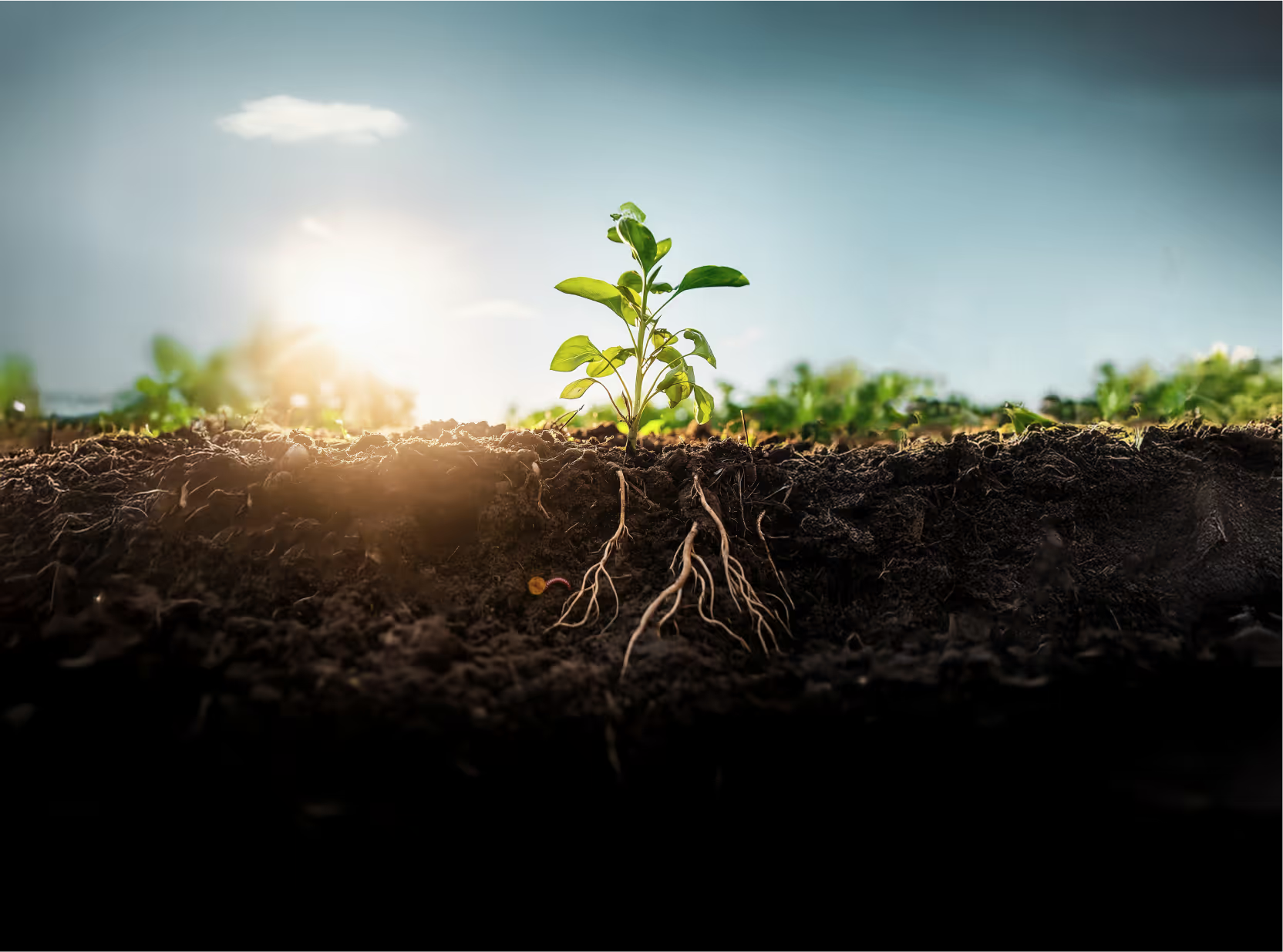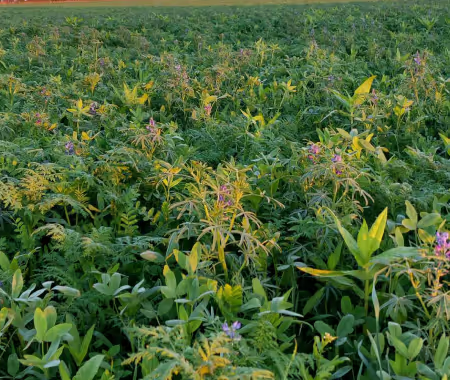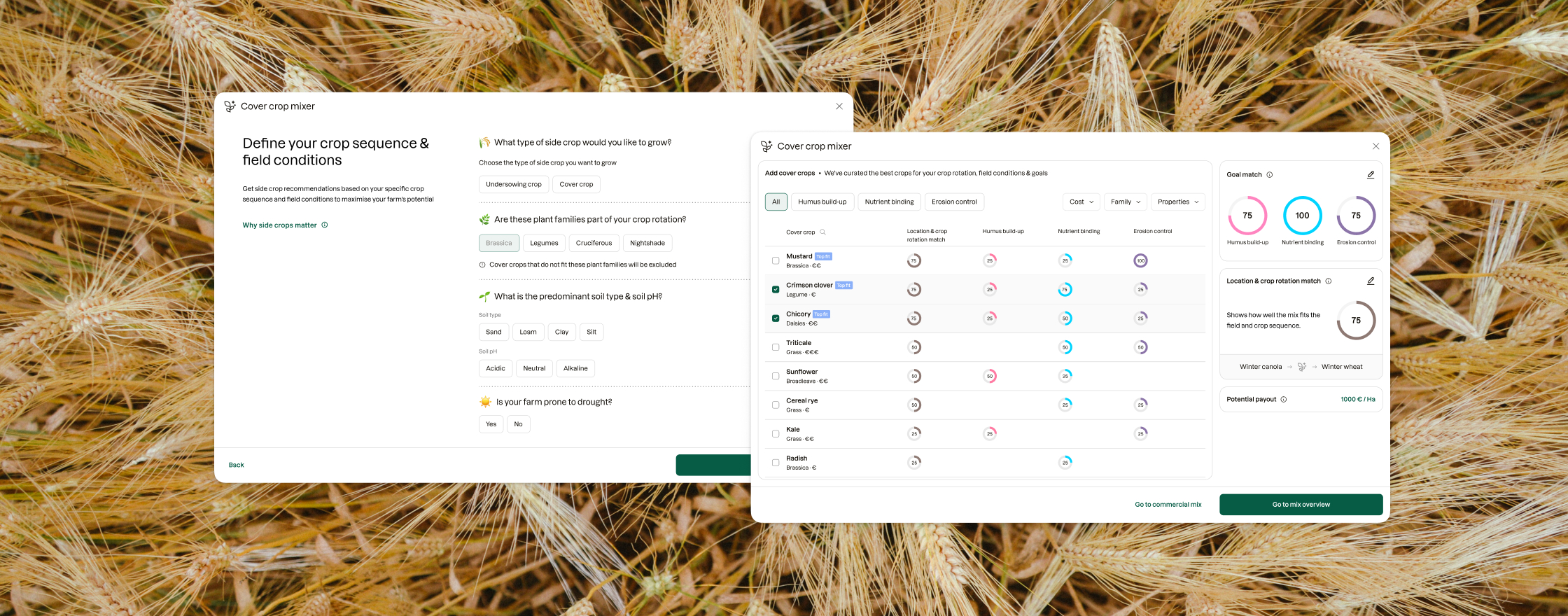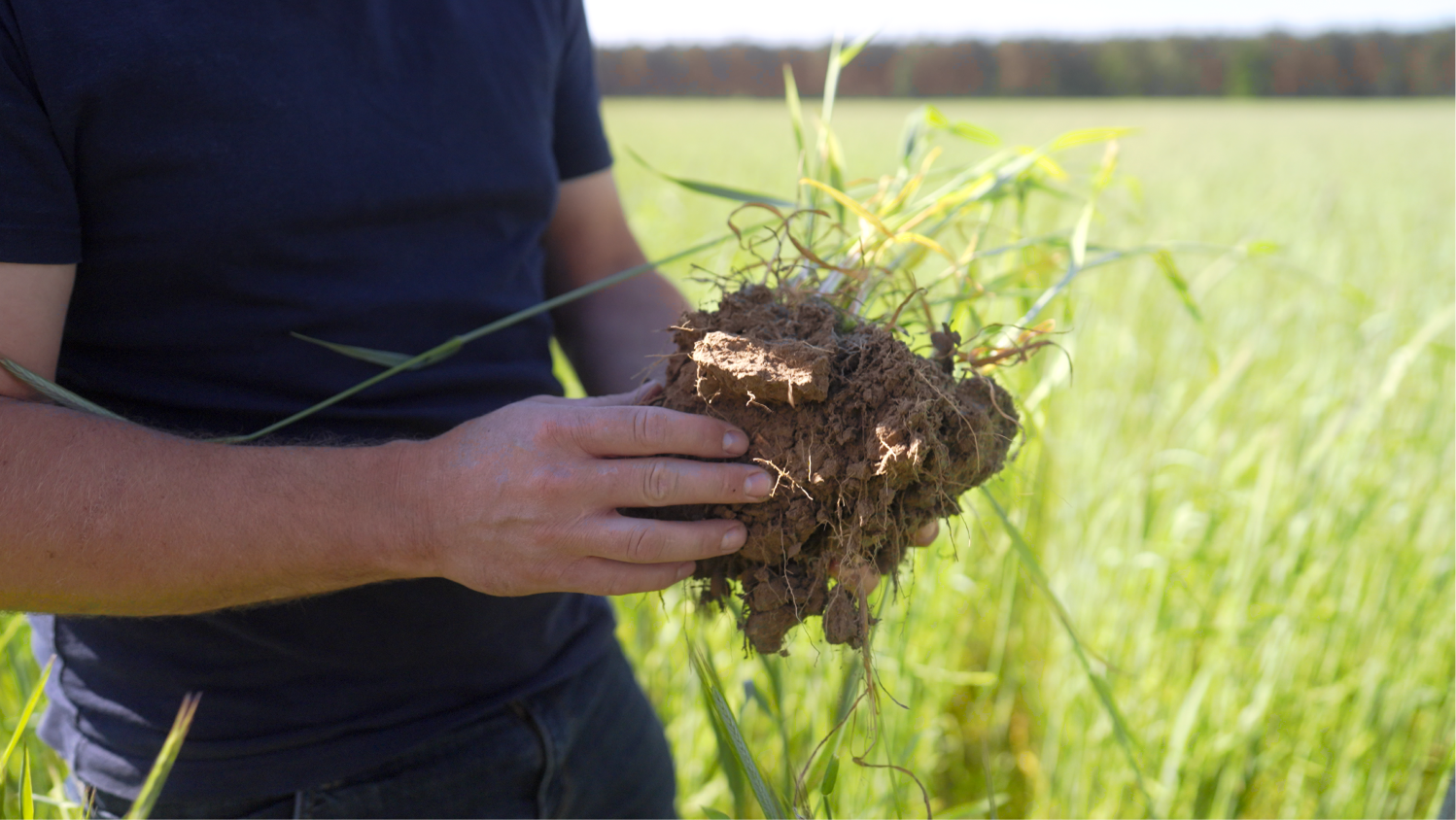
Regenerative agriculture for resilient food systems
Learn about regenerative practices that sustain long-term food production.
How do regenerative practices sequester carbon?



That's why we're taking you on a journey with a farmer who has made the transition in his own unique way.
Meet Tino Ryll, a Klim farmer managing a 500-hectare conventional farm in Germany. Since 2017, he has integrated regenerative practices into his oilseed and fruit production.
This is his regenerative story.
Why regenerative agriculture?
What are regenerative practices?



Other regenerative Practices





What are the benefits of regenerative agriculture?
Everyone benefits from regenerative agriculture
.svg)
farming
%20%2B%20Untersaat%20(Gras%2C%20links).avif)
Regenerative agriculture grows with collaboration
Support farmers from transition and beyond
More resources
More resources
FAQs
Regenerative agriculture is a holistic approach to farming that focuses on regenerating and revitalising soil health, increasing biodiversity, and improving the water cycle. It aims to restore ecosystems by enhancing soil organic matter and promoting practices that restore and enhance the natural environment. The goal is to create a more sustainable and resilient farming system that benefits both the environment and agricultural productivity.
Less tillage: Minimise soil disturbance to maintain soil structure and soil carbon.
Crop rotation and biodiversity: Growing a variety of crops to improve soil health and reduce pest and disease pressure.
Agroforestry: Integration of trees and shrubs into crop and livestock systems to improve biodiversity and soil health.
Rotational grazing: Managing livestock to mimic natural grazing patterns to improve pasture health and soil fertility.
Compost: Adding organic matter to soils to improve structure, fertility and microbial activity.
Regenerative agriculture focuses on long-term soil health and ecosystem resilience by using practices like crop rotation and reduced chemical inputs, enhancing biodiversity and minimising erosion.In contrast, conventional farming relies on synthetic fertilisers and pesticides, often leading to soil degradation and monoculture. Ultimately, regenerative agriculture aims to create sustainable systems that benefit both the environment and productivity, while conventional methods prioritise short-term yields.
The benefits of regenerative agriculture are manifold: Regenerative practices improve soil quality by increasing organic matter content and microbial activity. This results in better nutrient availability and water absorption. This approach also improves biodiversity and creates a resilient ecosystem that is better able to withstand pests and diseases.
Regenerative practices also help farms adapt to climate change by improving soil structure and water availability and reducing erosion and slurry. They also capture carbon dioxide from the atmosphere and thus help to mitigate climate change.
Economically speaking, regenerative agriculture can cut costs by reducing reliance on synthetic inputs, which ultimately improves profitability. Wildlife also benefits from regenerative agriculture by protecting their habitat, which contributes to the overall health of ecosystems.
Both organic and regenerative farms contribute to sustainable agriculture. Regenerative practices focus on soil health, while organic agriculture focuses on plant health.
The main challenges include the high transition costs and the need to acquire new knowledge. Farmers often have to spend a lot on new equipment and seeds at the beginning, without any guarantee of immediate profitability.Additionally, regenerative practices require deep ecological understanding and careful management of practices. Many farmers lack access to training or resources to effectively manage this transition, which brings risks. Combined with labor-intensive requirements and uncertain market incentives, these financial and knowledge-based barriers can make the transition to regenerative agriculture seem daunting.Together with food companies, Klim helps farmers overcome these challenges and ensure a smooth and safe transition to regenerative practices.
Regenerative practices promote biodiversity, which is so important for resilient ecosystems. A wider variety of plant and animal species contribute to natural pest control, pollination and nutrient cycling. Practices such as agroforestry or the use of perennial crops, for example, can expand the animals' habitat, improve the soil and at the same time stabilise yields.
The time frame may vary depending on the practices being implemented, the state of the soil, the local climate, and other factors. However, some analyses and studies found that the first gains per hectare can be achieved 3-5 years after the implementation of regenerative methods.
Transitioning to regenerative practices may require initial investment in new equipment, training and changes in operations, which can be quite expensive. This is why financial support from companies is so important during the transition to regenerative practices.Farmers may also lack access to information or training on regenerative practices and their benefits. Klim's platform is designed to provide farmers with expert knowledge and agronomic support to help them overcome these challenges.







.png)

.png)
.png)
.png)




%201.png)